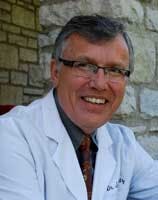The sleep apnea and ADHD connection: Our children bear the scars
People lobbying for gun control may want to consider another culprit in the post-Newtown search for the answer to our unfathomable questions. In Adam Lanza, with his classic adenoidal face structure, have we overlooked a possible root cause as simple as the very air we breathe … or more accurately, don't breathe? Failure to free a compromised child's breathing, usually through tonsil and adenoid removal, can have tragic repercussions which extend beyond the life of that individual. Parents today tend to view tonsillectomies with skepticism. Aren't we smarter now than when tonsils were routinely removed for a few stubborn sore throats? What about our president's well-publicized implications that surgeons fall prey to financial incentives to remove tonsils, limbs, and anything else that can be severed? Shouldn't we be wary?RELATED | Kids' sleep-related breathing problems and behaviorial sleep problems appear linked Evidence is mounting that if a child's tonsils are causing him or her to snore or breathe abnormally, there are more serious things to be wary of than the knife. The politicization of medical decisions is particularly regrettable fallout from Washington's debate over how to control one-fifth of our economy. After President Obama made his "cash for tonsils" gaffe at a health-care overhaul rally, The American College of Surgeons reacted strongly, and rightly so. Their official statement made it clear that the College still thinks its members take the Hippocratic Oath seriously, and are not knife-happy because of the current reimbursement schedules President Obama promises to convert into a greed-deterring system: "That remark (that a surgeon's decision to remove a child's tonsils is based on the desire to make a lot of money) was ill-informed and dangerous, and we were dismayed by the characterization of the work surgeons do." Aside from the insult to physicians, who still rank No. 2 on Forbes' "Most Respected Professions" list, is it a big deal to raise public doubt about the necessity of tonsillectomies and the motives of those we have traditionally trusted to do the right thing for our children?Changing trends in tonsillectomy Let's start by noting that two generations ago, tonsillectomies were routine, not due to snoring, but due to throat infections. Tonsillectomies were an inpatient procedure, and moer than one million American children had their tonsils removed in the 1950's alone! At that time, 90% of tonsillectomies were performed because of recurrent infections, but superior antibiotics and a generally cautionary approach to surgery reversed the tide. Today, only 20% of the tonsillectomies performed are due to recurrent infection. Eighty percent are due to sleep-disordered breathing, which is the spectrum that extends from primary snoring, which is often benign, through obstructive sleep apnea (OSA). (1)The brain remembers every insult The message that surprisingly hasn't been shouted from the rooftops is that we have significant evidence that sleep-related breathing disorders are associated with cognitive and behavioral impairment in children (which improve after tonsillectomy). What, then, if OSA is ignored and the child grows up with these "cognitive and behavioral impairments" becoming firmly rooted? Do we then have an adult with ADHD, with anxiety or depression, and often some very severe anger issues?RELATED |Special alert to dental professionals: Bruxism is caused by stress ... the stress of suffocating to death! It is safe to say that ADHD has been routinely misdiagnosed, undertreated, and overtreated, and the medical and psychological communities are still stabbing in the dark about root causes and defining physiological characteristics. The closest we have come to finding these is through PET scans, which have demonstrated abnormal glucose uptake patterns in the brains of symptomatic individuals. Why that happens and whether the reduced glucose uptake causes symptoms or simply coexists with them is as yet unclear. One thing that is clear is that a child diagnosed with ADHD will exhibit symptoms that mimic the very natural consequences of other infirmities or unmet physiologic needs — like quality sleep. The adult with ADHD is different from the child in that the pattern of behavior --> response to behavior --> negative reinforcement of self-image has been in place since childhood. Chronic inability to engage in social banter, listen attentively, keep to a calendar and be prompt, plan and organize ... all these basic necessities of a civilized lifestyle can be daunting to the adult with ADHD, and the reactions from the world are often emotionally debilitating.10 Symptoms of adult ADHD
- Difficulty getting organized
- Reckless driving and traffic accidents
- Marital difficulties
- Extreme distractibility
- Poor listening skills
- Restlessness, difficulty relaxing
- Difficulty starting a task
- Chronic lateness
- Angry outbursts
- Prioritizing issues
Dr. Metz is a diplomate and board member of the American Association of Dental Sleep Medicine. Having treated more than 2,500 sleep disordered patients, his outreach to colleagues, physicians, and the public is part of his mission to raise health risk awareness and improve treatment for sufferers of TMD and OSA. He brings a soft-spoken style and visionary approach to educating others in "medistry" (a term he coined for medically-informed dentistry). Since shedding 100 pounds in 2004 and alleviating his own case of sleep apnea, Dr. Metz relates readily to those struggling with OSA, obesity, and their attendant health problems. For more information, visit www.themetzcenter.com.References Head and Neck Surgery website, 2013. Newacheck PW. Am. J Public Health, 1992. Rosen C. Sleep, Yale University School of Medicine, 1996. Chang S, Chae K. J Pediatrics, Oct. 2010. National Sleep Foundation website, 2013. Oguzturk O. J Clin Psychological Medical Settings, 2012 SOURCE: PRNewswire

